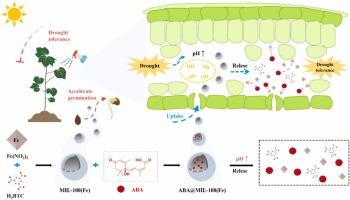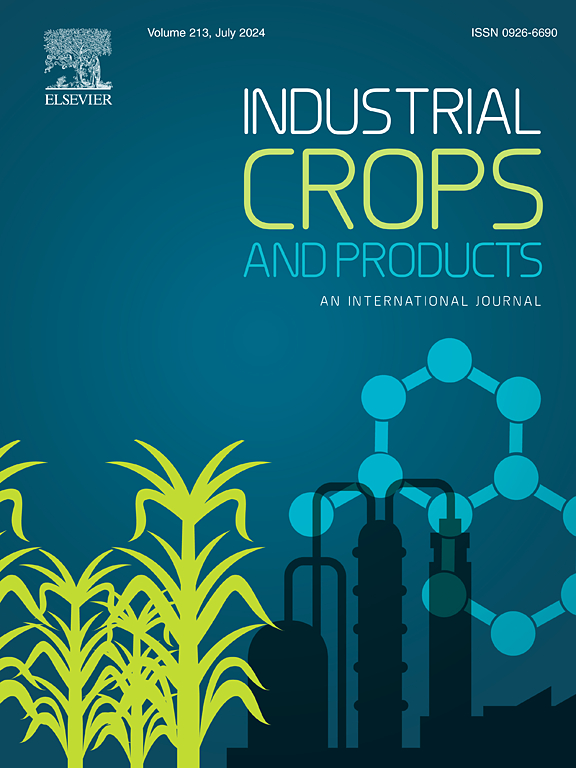A pH-responsive metal-organic framework for the anti-photolysis and controlled release of abscisic acid to improve the drought resistance of cotton
IF 5.6
1区 农林科学
Q1 AGRICULTURAL ENGINEERING
引用次数: 0
Abstract
Metal-organic frameworks that respond to environmental stimuli have attracted considerable attention as intelligent pesticide delivery systems in agriculture. Exogenous application of plant growth regulator abscisic acid can effectively enhance crop drought resistance. However, the photo-instability of abscisic acid and the limited efficacy of conventional dosage forms limit its application in the field. To cope with this challenge, a pH-responsive composite ABA@MIL-100(Fe) was prepared based on the metal-organic framework MIL-100(Fe) to achieve precise abscisic acid release by harnessing pH fluctuations that occur as a physiological response in the crop's microenvironment during drought stress. The ABA@MIL-100(Fe) composite exhibited a hydrated particle size of 162.3 nm and an abscisic acid loading rate of 22.2 %. Meanwhile, ABA@MIL-100(Fe) showed excellent pH-responsive release characteristics. At pH 7.2, the release of abscisic acid from ABA@MIL-100(Fe) reached 70.5 % after 3 h, which was higher than that after 25 h under acidic conditions. Under UV irradiation for 9 h, free abscisic acid experienced considerable degradation with a rate as high as 44.9 %, whereas only 12.5 % degradation was observed for encapsulated abscisic acid within ABA@MIL-100(Fe). In bioassay trials, both foliar smearing and spraying of ABA@MIL-100(Fe) notably improved drought tolerance in cotton seedlings. The promoting effect of MIL-100(Fe) was also observed at the germination stage of cotton seeds. These results suggest that ABA@MIL-100(Fe) can be used as an intelligent delivery system of photosensitive pesticides to achieve controlled release and improved photolysis resistance under drought conditions, and can be applied for effective drought stress mitigation.

求助全文
约1分钟内获得全文
求助全文
来源期刊

Industrial Crops and Products
农林科学-农业工程
CiteScore
9.50
自引率
8.50%
发文量
1518
审稿时长
43 days
期刊介绍:
Industrial Crops and Products is an International Journal publishing academic and industrial research on industrial (defined as non-food/non-feed) crops and products. Papers concern both crop-oriented and bio-based materials from crops-oriented research, and should be of interest to an international audience, hypothesis driven, and where comparisons are made statistics performed.
 求助内容:
求助内容: 应助结果提醒方式:
应助结果提醒方式:


